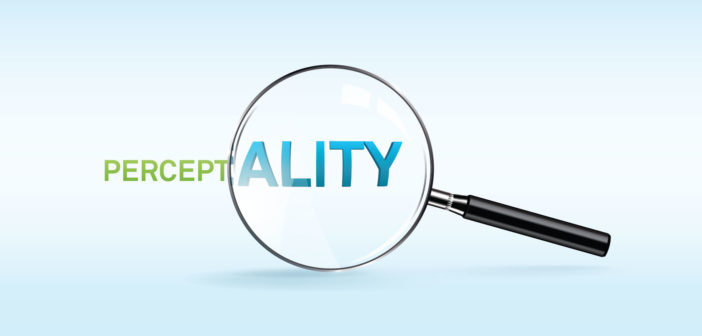Perception is our window to the world and is needed for the imagination of problem-solving. However, it is subjective and hard to share – and with that, it’s somewhat limited. Reality, on the other hand, is objective, based on facts and measurable.
Yet, we need both; one augments the other for understanding. When these two don’t align, we encounter problems, such as false assumptions and poor decision-making. The confidence, nimbleness, agility and speed that come from working in the real digital world are only possible when the difference between perception and reality is … well, zero.
Perception + Reality = Perceptality
When perception is augmented with digital data, we can make better decisions, work with more confidence and achieve higher-quality deliverables. When we fuse perception and reality, we arrive at Perceptality.
With perceptality, you have the foundation for a real digital world. This environment is where professionals execute brilliant visionary projects with the highest quality and efficiency. This is where they discover the full extent of their potential.
Uncovering perceptality potential in industries
The limitless potential of perceptality doesn’t only lie with professionals, but also lies across industries. Geosystems is in the business of bringing solutions based on perceptality to various sectors, such as:
- Utility mapping
- Urban planning
- Plant management
- Public safety
- Architecture, Engineering and Construction (AEC)
For utility companies managing power grids, perceptality allows them to understand whether their assets are safe. To keep the lights on for thousands of customers who depend on them, these companies need to keep track of transmission lines. As vegetation grows near and threatens these lines, digital representations enable professionals to make more informed decisions about the protection of power lines.
Urban planners are empowered to augment their perception of developing smart cities with the reality to make better decisions. To create accurate 3D city models for ever-growing cities, the richer the data, the better the understanding.
For plant managers, perceptality increases safety and decreases costs. In complex industrial facilities, billions are spent to keep track of assets. If even a small mistake is made at the beginning, the entire trajectory of the project can be off schedule, creating massive cost overruns and significant time delays. Reality capture provides a means to avoid such costly mishaps.
For public safety professionals, perceptality ensures justice by getting to the truth. Forensic investigations must capture a scene before it is compromised or changed. Crucial evidence has to be preserved to stand up at trial. With laser scanning, these scenes can be captured and preserved intact forever.
For AEC professionals, perceptality brings greater efficiency. Renovations that are planned incorrectly can drive repair costs up and property values down. Augmenting building renovations with digital realities saves substantial time and cost.
In all these cases and more, perceptality is achieved with digital solutions that focus on bringing together the perfection of a plan with the richness of the truth. Data must be fused and supplemented to reach perceptality.
When we transform the real world into a digital reality, perception and reality become one – that’s shaping smart change.

Juergen Dold, president of Geosystems, has been a part of Hexagon since 1995. Before joining Hexagon, he served as academic counsel at Technical University of Braunschweig, Germany, and in various management positions within Leica Geosystems. He currently serves as a member of the Supervisory Board of Basler & Hofmann AG, an independent engineering, planning and consulting company. Dold holds a Master of Science and Ph.D. in engineering. Follow him at @JuergenDold














